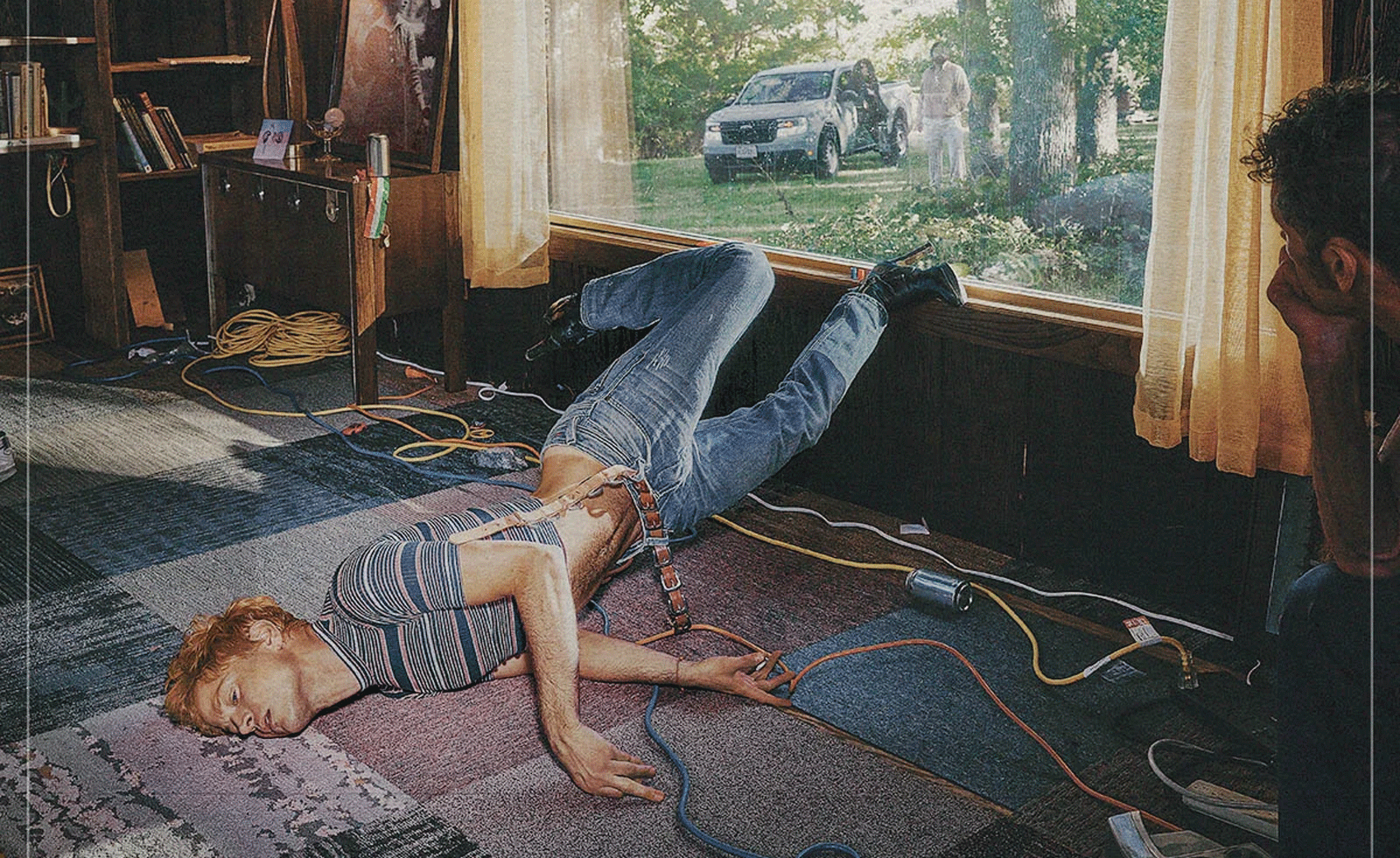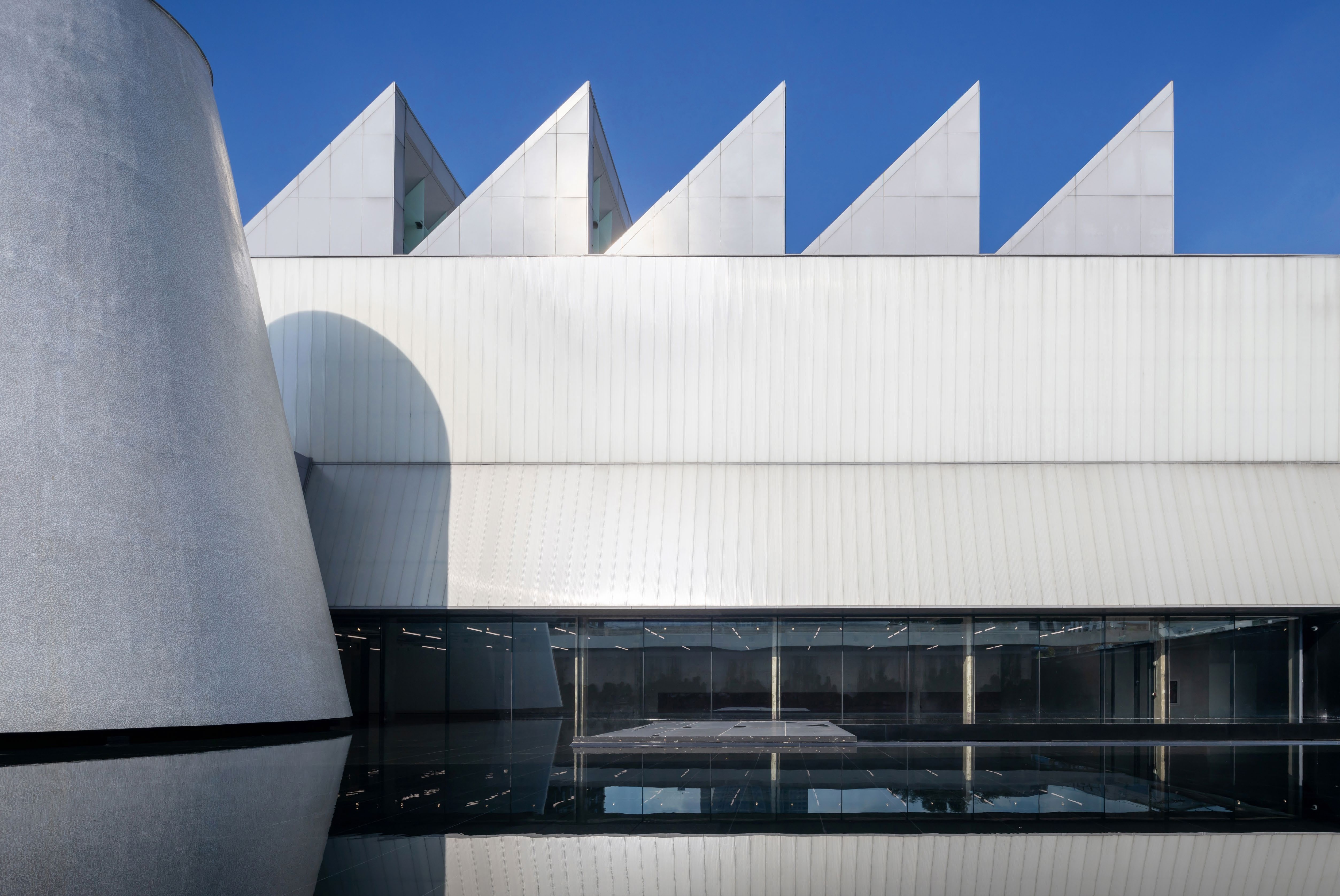‘The United States of América’: how Willy Chavarria is rewriting American fashion
Wallpaper* catches up with Willy Chavarria, who staged his latest show, ‘América’, in a disused bank on New York’s Wall Street yesterday evening (September 6 2024)

Willy Chavarria knows well about immigrants’ contributions to the United States. As the child of an Irish-American mother and Mexican-American father who was born and raised in rural Fresno, California – a small city in the Central Valley located three hours away by car from San Francisco – Chavarria grew up in a working-class migrant family, so he witnessed first-hand the gruelling hours immigrants work to achieve the American dream.
‘The community that I grew up in as a kid had a tremendous influence on not only my aesthetic and my work ethic, but also my view of what the country is that we live in, what it means to be American,’ Chavarria says prior to his S/S 2025 runway show, which took place yesterday evening (September 6) as part of New York Fashion Week. ‘I grew up around my grandparents and my father, who were very proud to be in this country, and to be Americans.’
Inside Willy Chavarria’s ‘América’

Willy Chavarria photographed by Inez & Vinoodh for the August 2024 issue of Wallpaper*, a guide to creative America
Titled América, the show – held at 23 Wall Street, at a former bank in the heart of the Financial District – saw Chavarria pay homage to immigrants and the American spirit, the people who ‘labour in the fields, bringing food to our tables, building our cities, making our music, and weaving stories into the fabric of this land,’ as the collection notes described.
‘Given the time that we're in – around the corner from a major election – I wanted to shine light on the people who make this country work, and also celebrate immigration and those people who have built the country and are still the backbone of the country,’ says Chavarria, who used specific characters who he grew up around – like a farm worker, a hotel manager, or an employee who worked at the electronics chain Circuit City – as the foundation for each look. ‘We haven't had the opportunities or the benefits that a lot of our white brothers and sisters have had,’ explains Chavarria. ‘It's about giving, showing dignity to all of these people.’
‘Given the time that we're in – around the corner from a major election – I wanted to shine light on the people who make this country work’
Willy Chavarria
Workwear served as the basis, like the tailored trousers of farm workers, or the crisp red collared button-up shirts that were part of the Circuit City uniform. ‘It's almost like taking Carhartt workwear and reimagining it so that it's fashion,’ says Chavarria. Meanwhile, a collaboration with Adidas Originals was also revealed at the show.
Held under an enormous American flag, the show began with a performance by Yahritza y Su Esencia, an urban sierreño trio consisting of three brothers from Washington’s Yakima Valley. Meanwhile, photographer Carlos Jaramillo took the invitation image – a tattoo-covered Chicano man holding a baby, an effort to look towards the possibility of the future. A copy of the American Constitution by the ACLU was left on each attendee’s seat, and stickers imploring people to vote were handed out post-show. ‘The election is actually still very close,’ Chavarria says.

A look from Willy Chavarria’s S/S 2025 collection, which drew inspiration from working uniforms
‘When I look at the United Farm Workers Movement and the Women's Liberation Movement and the Civil Rights movement, it really does remind me that we can make big changes when we really come together and work on it,’ he says.
In many ways, Chavarria is the embodiment of the American dream. From growing up in Fresno, California he would go on to land roles at American labels like Joe Boxer, American Eagle and Ralph Lauren, before starting his eponymous label in 2015 and later becoming senior vice president of design at Calvin Klein (he stepped down earlier this year to focus on his brand). Winning the 2023 American Menswear Designer of the Year at the CFDA Awards cemented his position as one of the country’s most distinct voices.
Receive our daily digest of inspiration, escapism and design stories from around the world direct to your inbox.
Next on his list is plans to add an affordable line of clothes to the brand. ‘I definitely have this belief that we can do luxury and we can do $20 tank tops,’ he says. ‘It's a different way of working and a different way of selling clothes that no one has ever really done under one label. But I absolutely believe that this is the time for it.’
Ann Binlot is a Brooklyn-based freelance writer who covers art, fashion, design, architecture, food, and travel for publications like Wallpaper*, the Wall Street Journal, and Monocle. She is also editor-at-large at Document Journal and Family Style magazines.
-
 These ten albums had the best artwork of 2025
These ten albums had the best artwork of 2025A plethora of new releases this year look as good as they sound. Here are our favourites
-
 Dib Bangkok, a new Thai cultural destination, celebrates rawness and local grace
Dib Bangkok, a new Thai cultural destination, celebrates rawness and local graceWith Dib Bangkok, Thailand’s first international contemporary art museum, Kulapat Yantrasast plays all the angles
-
 Finnish Design Shop has unveiled an interiors collection inspired by the modernist art of Helene Schjerfbeck
Finnish Design Shop has unveiled an interiors collection inspired by the modernist art of Helene SchjerfbeckThe collection’s serene colour palettes and refined finishes draw directly from Schjerfbeck’s paintings, translating her Nordic modernist sensitivity into contemporary objects